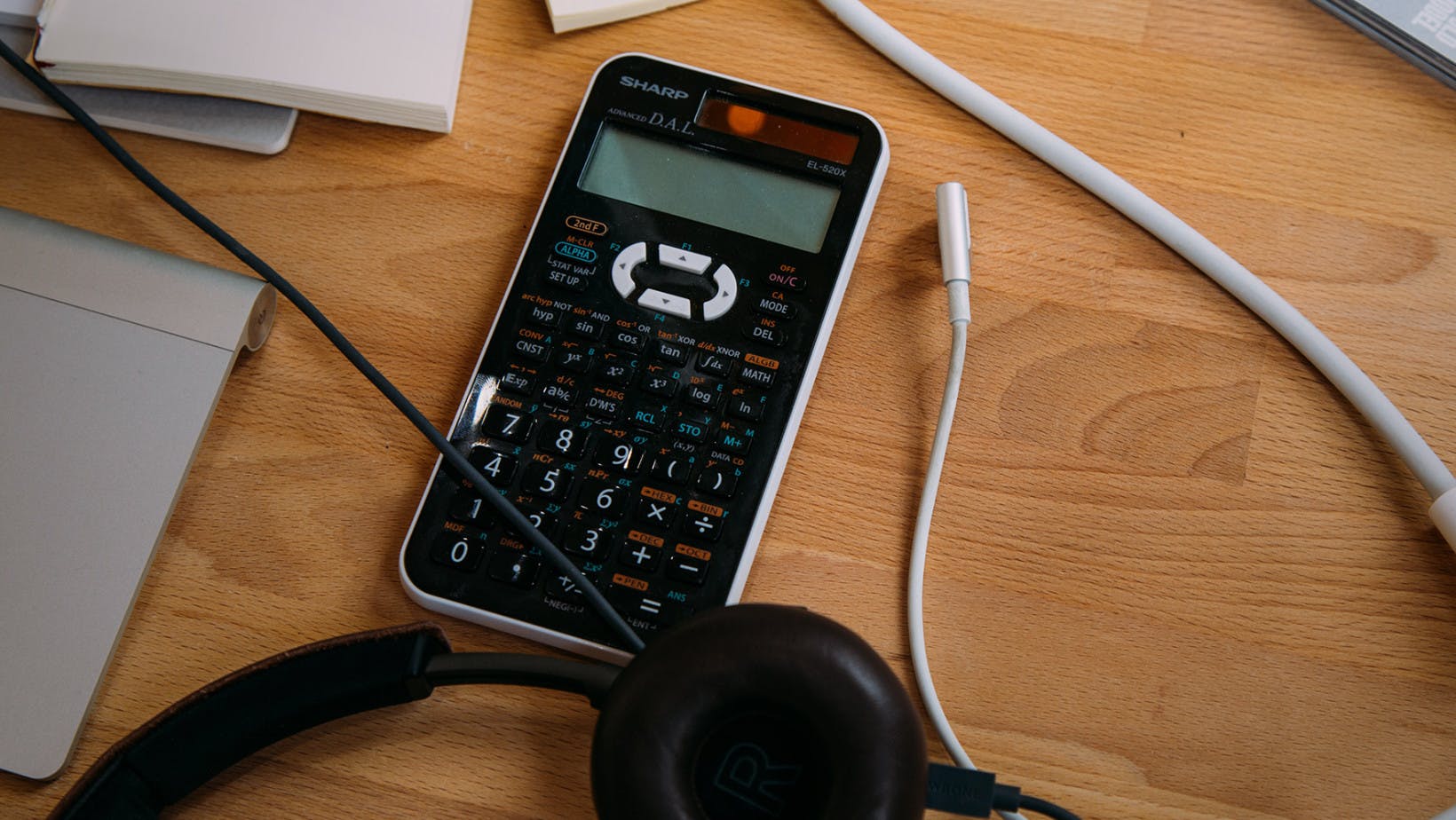
College Success
Most Common Student Loan Requirements
Learn what a fixed cost is with some examples, the differences between variable and fixed costs, and why there are no fixed costs in the long run.
Nick Griffin
Subject Matter Expert

College Success
11.17.2022 • 9 min read
Subject Matter Expert
The Federally Guaranteed Student Loans Program is no more. We explain what happened to people’s debt and provide the present options for financial aid.
In This Article
According to the Education Data Initiative, 43.4 million people in the U.S. owe $1.7 trillion in federal student loan debt. With so much student debt taking out loans to pay for school seems to be just a part of American society.
Currently, the federal government issues 3 different types of student loans—direct subsidized, direct unsubsidized, and direct PLUS. This was not always the case though, as several past loan programs are no longer in existence.
The Federally Guaranteed Student Loan Program—also called the Federal Family Education Loan Program (FFELs)—ended in 2010. But many people are still paying on these loans today.
Federally guaranteed student loans, or FFELs, are different from student loans we see today, like private student loans and direct loans. While a private financial institution issues and manages private loans, the federal government issues direct loans at a fixed interest rate.
Federally guaranteed loans were loans issued to students by private lenders called guaranty agencies, but with a government guarantee. This means that if the student did not pay the loan back, the government would pay the lender and take over the loan.
Once the government took over the loan, it was now responsible for collecting payments from the borrower.
Since the end of FFELs in 2010, student loan debt has skyrocketed. Overall, student loan debt in the U.S. in 2010 was around $760 billion. Today, the $1.7 trillion in student loan debt excludes any private student loan debt. This makes the real number much higher.
The federal government created the FFEL Program in 1965 to help students with high financial need access loans to pay for college. Since the federal government backed student loans, lenders were willing to give loans,including to students who had little to no credit and no cosigner.
As time went on, the FFEL Program began including any student who needed a loan, regardless of their personal or family income and credit level.
Under the FFEL Program, the private lender would completely hold the loan.
If any student borrowers defaulted on their loan, the federal government would pay off 97% of the loan to the private lender and then take over responsibility. From its inception to the end of the program in 2010, about 60 million Americans were able to go to college.
While the FFEL Program was a success for many students, it was not beneficial to the U.S. Government. Since the government backed all student loans, it had to both pay subsidies to financial institutions and manage defaulted loans.
Over time, Congress debated the costs taxpayers had to endure to keep the FFEL Program going. Other programs—such as Pell Grants—were created during this time to reduce the number of students who could not afford to pay their loans back.
The government could change things up though. It could become the loan servicer of student loans and profit from them, rather than lose money on defaulted loans.
While Republicans felt the U.S. Government should not get into the loan business and leave financial institutions in charge, Democrats pushed toward the creation of a student loan entity inside the U.S. Department of Education.
In 2010, President Barack Obama signed into law the Health Care and Education Reconciliation Act (HCERA). This bill required that all federal student loans go through the government’s direct lending program from 2010 on.
The HCERA brought an end to federal money being given to banks and credit unions for student loan defaults. This hurt the country’s financial institutions.
The initiation of federal direct student loans also did not address the looming problem of increased college tuition costs.
The Education Data Initiative reports that college education costs have more than doubled since the year 2000. This leaves students taking out more money in loans to cover college costs.
With student loans changing hands from private institutions to the federal government, there were millions of students left with FFELs. These students are still making payments to the financial institution that gave them the loan.
If current FFEL borrowers default on their loans, it is still the government’s responsibility to pay the financial institution and take over the loan.
Currently, there are around 10 million Americans who are making payments on FFELs. This is a total debt of $238 billion, according to the National Student Loan Data System.
These FFEL borrowers have the option to consolidate their loans, refinance, or get onto a repayment plan through their financial institution with help from the government.
A few popular loan repayment options are:
With graduated repayment, the payment amount increases every two years until the borrower pays off the loan. The idea behind this repayment plan is that the borrower will continue to make more income as time goes by.
Eligibility for the Income-Sensitive Repayment Plan is limited to those with FFELs and lasts no more than 10 years. During this time, borrowers will make monthly payments based on their current income. As income levels change, so do the payment amounts.
The Extended Repayment Plan allows the borrower to spread their loan payments out over 25 years. The borrower will make the same payment each month until they pay the loan off. This option allows the borrower to know exactly what their expenses will be.
During the COVID-19 Pandemic, the Biden administration passed the CARES Act, which put in place federal loan forbearance. This means the government suspended all federal student loan interest and payments until August 31, 2022.
While this was helpful for the millions of people holding federal student loans, it did not help those with FFELs at private institutions. Only FFEL borrowers who defaulted on their loans—which were then taken over by the government—were eligible for forbearance.
Since the end of guaranteed student loans and FFELs, several financial aid options are available to help students pay for college.
Three federal direct loan programs exist that you should be familiar with. They offer fixed interest rates to borrowers through nonprofits like Sallie Mae.
Currently, the interest rate on direct subsidized loans is 4.99%, which is very low for student loans. Subsidized loans—or Stafford Loans—are for undergraduate students and do not accrue interest until 6months after graduation.
Direct subsidized federal loans give students the time to graduate, find a job, and become financially stable before asking them to pay the loan back with interest. If direct subsidized loans are available to you, this is the type you should take out first.
Offered to graduate and professional students, direct unsubsidized loans have a current interest rate of 6.54%. Being unsubsidized means that these loans start accruing interest from the time you take out the loan.
A savvy graduate student taking out federal unsubsidized loans would make interest payments each month while in school. Doing so will allow you to graduate and start paying down the principal as soon as you get a good job. But you are not required to do so until after the 6-month grace period.
These loans are just what the name PLUS implies: an extra loan on top of existing student loans. These are unsubsidized. This means they start accruing interest right away, and they have a current interest rate of 7.54%.
Direct PLUS loans are for graduate students or for parents (Parent Plus Loans) to take out extra loans to help their children. These loans require a credit check and a cosigner for dependent students. Since these loans have a higher interest rate, you should use them only when necessary.
*Source - Studentaid.gov
Dr. Kelly Richmond Pope—Outlier’s Intro to Financial Accounting instructor—explains the different loan options:
By filling out a FAFSA (Free Application for Federal Student Aid), you can determine which new loans you qualify for. The FAFSA will also tell you if you can get federal grants to pay for college.
You should use federal student loans first since they always offer the lowest interest rates. Once you have the cost of attendance (COA) from your chosen college and your FAFSA information, you will know if you need to borrow additional money in private student loans.
No, but most students do. Usually, students pay for college through a combination of grants, scholarships, student loans, and savings. While the idea of graduating from college without any debt sounds nice, it may be hard to achieve.
Try reducing your college costs by applying for several grants and scholarships. Then make a college budget and stick to it. The more costs you can reduce, the less money you will have to pay back later.
It is possible to work while attending college. Pulling this off takes a lot of organization and a firm commitment to both academic success and job performance.
While many students work during their college years, working full time pulls students away from college tasks like reading and studying. This is where student loans come in—relieving the stressful burden of having to cover all of your expenses. This way you can focus on school and later focus on paying for it.
As discussed above, getting grants and scholarships to help pay for school is a great way to reduce college costs.
It’s also a smart decision to earn some college credit before attending courses on campus as a full-time student. Many high schools partner with community colleges to offer students transferable college credit, saving you thousands of dollars on college tuition costs.
Taking courses online is another great way to save money on college. Through Oulier.org students can take interactive online courses for a fraction of the cost of a typical college class. Outlier courses are not only affordable, but the credits you earn are also transferable from the University of Pittsburg to nearly any other school.
For a total cost of $8,940, students can earn an associate degree through Golden Gate University Degrees+ powered by Outlier.org and start working in a field that interests them. Students can also choose to transfer these credits into a 4-year university program to work toward a bachelor’s degree.
The key is to do what you can to cut costs, but be open to utilizing student loans when you need them. Take the time to learn about FAFSA as well as loan forgiveness programs. Remember that you are making an investment in your life that is sure to pay off down the road.
Outlier (winner of TIME Best Inventions 2020) and Golden Gate University (#1 school for working professionals) have redesigned the experience of earning a college degree to minimize cost and maximize outcomes. Explore a revolutionary way to earn your college degree:

College Success
Learn what a fixed cost is with some examples, the differences between variable and fixed costs, and why there are no fixed costs in the long run.
Subject Matter Expert

College Success
Learn the different types of student loans and the difference between federal and private. Also read how to apply for these loans and which type of loan is best.
Subject Matter Expert

College Success
Here’s a quick and easy guide on how to fill out the FASFA form with easy-to-follow steps, tips, FAQs, and more.
Subject Matter Expert